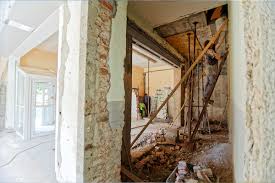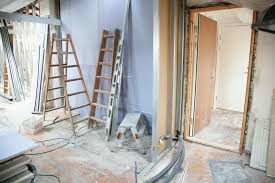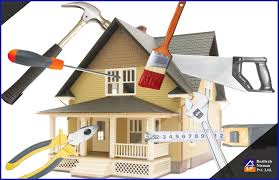House Renovation: A Comprehensive Guide
House renovation is a transformative journey that involves modifying, updating, or expanding a home. Whether motivated by the need for more space, a desire to modernize, or the necessity of repairs, renovations can significantly enhance the value and functionality of a home. This guide will delve into the various aspects of house renovation, from planning and budgeting to design and execution, providing insights that can help homeowners navigate this complex process successfully.
- Understanding the Need for Renovation
1.1 Common Reasons for Renovation
Homeowners may choose to renovate for several reasons, including:
- Increased Functionality: Families grow, lifestyles change, and what was once sufficient space may no longer meet needs. Renovations can create additional living areas, such as converting basements or attics into usable space.
- Modernization: Outdated styles and inefficient layouts may necessitate an update. Modern renovations often incorporate new technology and energy-efficient appliances.
- Improved Safety: Older homes may have safety issues such as outdated electrical systems, structural weaknesses, or lead-based paints. Renovating can address these concerns.
- Enhancing Property Value: Renovations can significantly increase a home’s market value, making it more appealing to potential buyers.
1.2 Assessing the Current Condition of Your Home
Before embarking on a renovation project, it’s essential to evaluate the current condition of your home. Key areas to assess include:
- Structural Integrity: Check for issues in the foundation, walls, and roof. Cracks, water damage, or mold can indicate deeper problems.
- Systems and Infrastructure: Inspect plumbing, electrical, and HVAC systems for outdated or inefficient components.
- Aesthetic Appeal: Consider the overall design and flow of your home. Identify areas that feel cramped or outdated.
- Planning Your Renovation
2.1 Setting Goals and Objectives
Establish clear goals for your renovation project. Ask yourself:
- What areas of the house need improvement?
- What is the primary purpose of the renovation?
- Are you looking to create more space, update aesthetics, or improve energy efficiency?
2.2 Budgeting for Renovation
Creating a detailed budget is crucial for any renovation project. Consider the following steps:
- Determine Your Budget: Assess your financial situation and set a realistic budget for the renovation.
- Cost Breakdown: Break down your budget into categories such as materials, labor, permits, and unexpected expenses.
- Contingency Fund: Allocate 10-20% of your budget for unforeseen costs that may arise during the renovation process.
2.3 Timeline Planning
Establish a timeline for your renovation project. Factors to consider include:
- Project Scope: Larger projects may take longer than smaller updates.
- Permitting Process: Some renovations may require permits, which can extend the timeline.
- Seasonal Considerations: Weather can impact construction timelines, particularly for outdoor projects.
2.4 Hiring Professionals vs. DIY
Decide whether to hire professionals or tackle the renovation yourself. Factors to consider:
- Skill Level: Assess your own skills and experience. Certain tasks, such as electrical or plumbing work, may require licensed professionals.
- Time Commitment: Consider how much time you can dedicate to the project. DIY can be time-consuming, especially for complex renovations.
- Cost Implications: Weigh the costs of hiring professionals against potential savings from doing it yourself.
- Designing Your Renovation
3.1 Gathering Inspiration
Begin the design process by gathering inspiration from various sources:
- Home Improvement Magazines: Browse through magazines for design ideas and trends.
- Online Resources: Websites like Pinterest and Houzz provide a wealth of visual inspiration.
- Showrooms: Visiting showrooms can help you see materials and layouts in person.
3.2 Creating a Design Plan
Once you have gathered inspiration, create a cohesive design plan that includes:
- Floor Plans: Sketch out the layout of the renovated spaces, considering flow and functionality.
- Color Schemes: Choose a color palette that complements your style and enhances the space.
- Material Selection: Select materials for flooring, countertops, cabinetry, and fixtures.
3.3 Working with Designers and Architects
If your renovation involves significant structural changes, consider hiring a designer or architect. They can help:
- Maximize Space: Optimize layouts for better flow and functionality.
- Ensure Compliance: Navigate building codes and regulations.
- Provide Expertise: Offer professional insights on materials, finishes, and design trends.
- The Renovation Process
4.1 Obtaining Necessary Permits
Before starting the renovation, ensure that you obtain any necessary permits. This step may involve:
- Researching Local Regulations: Understand the regulations in your area concerning renovations.
- Filing Applications: Submit applications for permits to your local building department.
4.2 Demolition and Preparation
Once permits are secured, begin the demolition phase, if applicable. Consider the following:
- Protecting Other Areas: Use tarps and barriers to protect other areas of the home from dust and debris.
- Disposing of Materials: Arrange for the proper disposal of demolished materials, considering recycling options.
4.3 Construction and Installation
The construction phase is where your vision starts to take shape. Key considerations include:
- Hiring Skilled Labor: If using professionals, ensure they are licensed and experienced.
- Monitoring Progress: Regularly check in on the project to ensure it stays on track and meets your expectations.
- Communication: Maintain open communication with your contractor or workers to address any concerns.
4.4 Finishing Touches
After the major construction work is complete, focus on finishing touches to complete the renovation. This may include:
- Painting: Apply final coats of paint to walls and ceilings.
- Installing Fixtures: Hang light fixtures, install cabinetry, and add hardware.
- Landscaping: For exterior renovations, consider landscaping to enhance curb appeal.
- Post-Renovation Considerations
5.1 Cleaning and Inspection
After completing the renovation, conduct a thorough cleaning of the area. Additionally, inspect the work to ensure it meets your standards and adheres to building codes.
5.2 Enjoying Your New Space
Once everything is clean and inspected, it’s time to enjoy your newly renovated space. Consider hosting a gathering to show off the improvements to friends and family.
5.3 Maintaining Your Renovated Space
To ensure your renovations last, establish a maintenance routine. This can include:
- Regular Cleaning: Keep surfaces clean and well-maintained.
- Scheduled Inspections: Periodically check for any issues, such as leaks or wear and tear.
- Updating Systems: Ensure that systems like HVAC, plumbing, and electrical are serviced regularly.
- Common Challenges in House Renovation
6.1 Budget Overruns
Budget overruns are a common challenge in renovation projects. To mitigate this:
- Set Realistic Expectations: Be prepared for potential price increases and delays.
- Regularly Review Finances: Monitor spending throughout the project to stay within budget.
6.2 Delays and Setbacks
Delays can occur due to various factors, including weather, supply chain issues, or contractor availability. To manage delays:
- Build Buffer Time: Allow for extra time in your project timeline to accommodate potential setbacks.
- Maintain Flexibility: Be open to adjusting plans as needed.
6.3 Decision Fatigue
The renovation process involves numerous decisions, which can lead to fatigue. To combat this:
- Prioritize Key Decisions: Focus on major elements first and tackle smaller details later.
- Limit Options: Narrow down choices to avoid feeling overwhelmed.
- Conclusion

House renovation can be a rewarding experience, enhancing the comfort, functionality, and value of your home. By understanding the renovation process—from planning and budgeting to execution and maintenance—you can navigate this journey with confidence.
A successful renovation requires careful planning, effective communication, and a willingness to adapt to challenges. Whether you choose to engage professionals or take on the project yourself, the key is to stay organized and focused on your goals. Ultimately, a well-executed renovation can transform your living space into a place that reflects your style and meets your needs for years to come.

